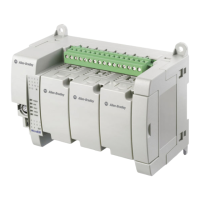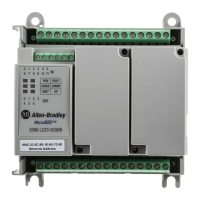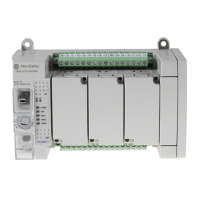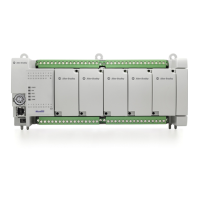12 Rockwell Automation Publication 1766-UM001I-EN-P - June 2015
Chapter 2 Install Your Controller
voltage sag on other equipment should be considered. For example, a deep voltage
sag may reset a computer connected to the same power source. The following
considerations determine whether the power source must be required to supply
high inrush current:
• The power-up sequence of devices in a system.
• The amount of the power source voltage sag if the inrush current cannot be
supplied.
• The effect of voltage sag on other equipment in the system.
If the entire system is powered-up at the same time, a brief sag in the power source
voltage typically will not affect any equipment.
Loss of Power Source
The power supply is designed to withstand brief power losses without affecting
the operation of the system. The time the system is operational during power loss
is called program scan hold-up time after loss of power. The duration of the
power supply hold-up time depends on the type and state of the I/O, but is
typically between 10 milliseconds and 3 seconds. When the duration of power
loss reaches this limit, the power supply signals the processor that it can no longer
provide adequate DC power to the system. This is referred to as a power supply
shutdown. The processor then performs an orderly shutdown of the controller.
Input States on Power Down
The power supply hold-up time as described above is generally longer than the
turn-on and turn-off times of the inputs. Because of this, the input state change
from “On” to “Off ” that occurs when power is removed may be recorded by the
processor before the power supply shuts down the system. Understanding this
concept is important. The user program should be written to take this effect into
account.
Other Types of Line Conditions
Occasionally the power source to the system can be temporarily interrupted. It is
also possible that the voltage level may drop substantially below the normal line
voltage range for a period of time. Both of these conditions are considered to be a
loss of power for the system.

